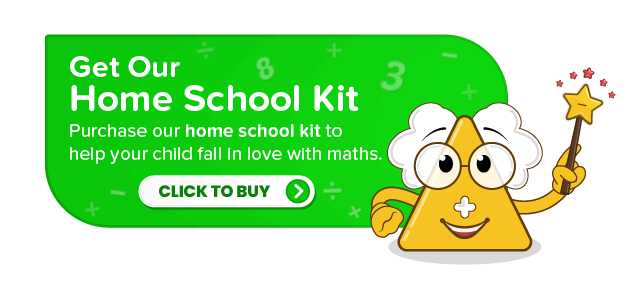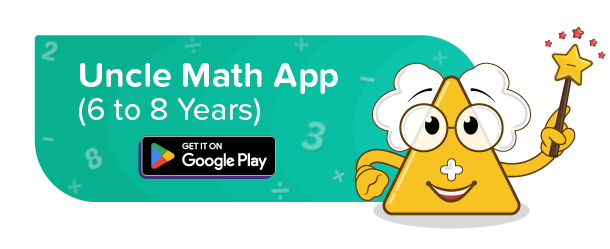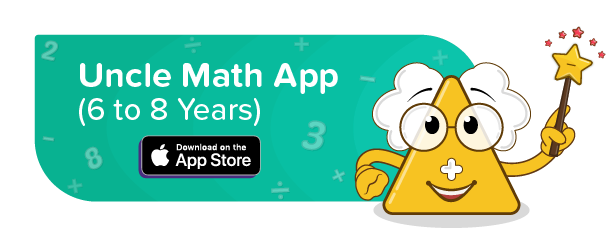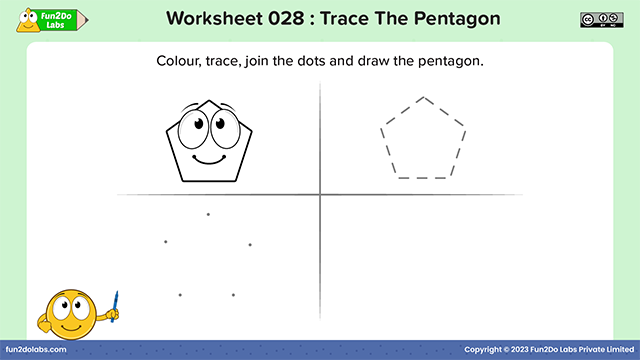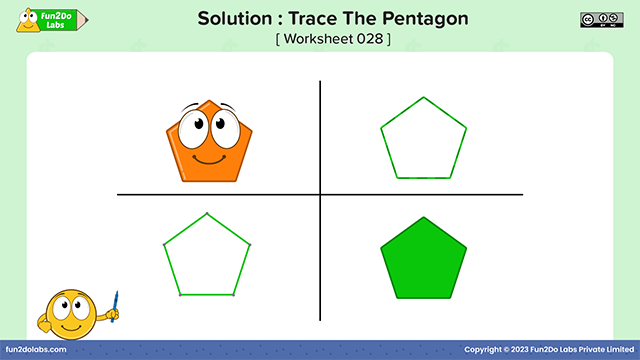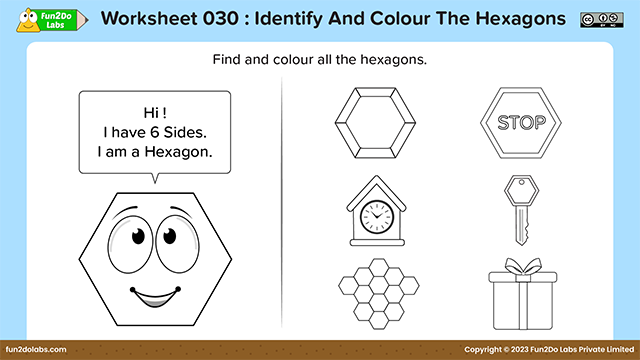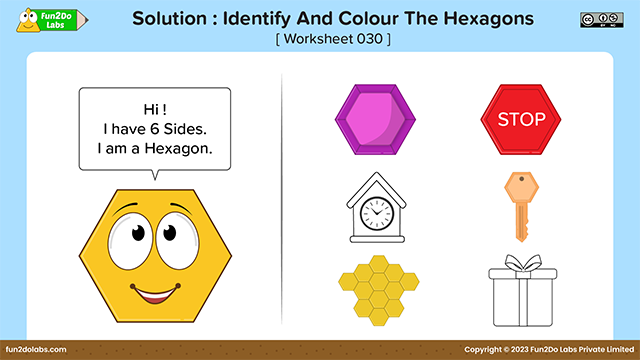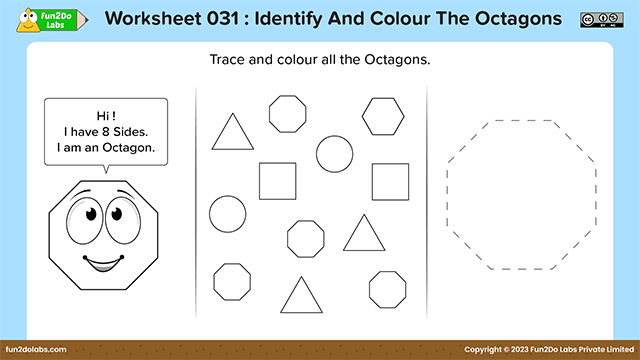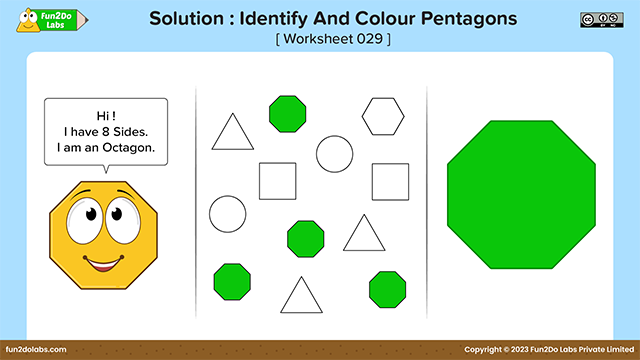
A shape can be simply explained as the boundary or outline of an object. Everything around us can easily be defined in terms of shape. Each shape is defined by its distinct characteristics, like the number of sides and the number of vertices. Learning about 2D shapes will help kids increase their observation and communication skills, as well as learn more about their surroundings.
A few examples of basic 2D shapes like circles, squares, rectangles, triangles, ovals, semi-circles, diamonds, hearts, and stars are taught in pre-primary classes to kids. In addition to these shapes, kids also learn a few more 2D shapes in primary classes along with 3D shapes.
Polygons
Polygons are 2-dimensional closed shapes. Polygons are made of straight lines. As polygons are always closed shapes, the minimum number of sides a polygon can have is 3.
Polygons are named on the basis of the number of lines. There is a rule for naming any polygon. A polygon is named by the (n)gon rule, where ‘n’ represents the number of sides. For example, a six-sided polygon is named a hexagon, a ten-sided polygon is named a decagon, and so on.
However, a few polygons are named differently, like a triangle, a 3-sided polygon, and a square or rectangle, a 4-sided polygon.
Types of Polygons
Polygons are classified on the basis of the number of sides and types of angles they have:
Classification on the basis of sides :
Regular and Irregular Polygons :
Regular Polygons : A closed shape made of equal straight sides and equal angles is called a regular polygon.
For example, a square is a four-sided regular polygon. A few examples of regular polygons are shown below :

Irregular Polygons : A closed shape made of unequal straight sides and unequal angles is called an irregular polygon. A few examples of irregular polygons are shown below :

Polygons up to 10 sides :
Classification on the basis of angles :
Convex and Concave Polygons :
Convex Polygons : A polygon with all interior angles less than 180° is called a convex polygon. All diagonals of the polygon are in the interior of the polygon.
Here are a few examples of convex polygons.

Concave Polygon: A polygon is concave if any of its internal angles measures more than 180°. A polygon that appears to have at least two sides pushed inward is said to be concave. A star is a concave polygon, for instance.
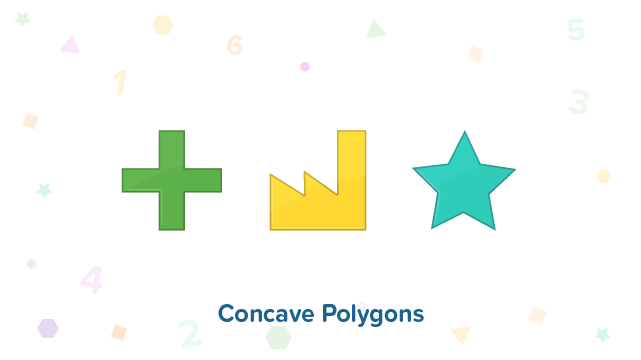
Teaching shapes with kid-friendly, clear, and easy-to-understand posters from Uncle Math School by Fun2Do Labs :
Ignite kids’ curiosity with engaging stories for role play and skits, making the learning of this concept an exciting and effective experience. Teaching 2D Shapes through stories from Uncle Math School by Fun2Do Labs :
- When Squarho Is Upset
- The Rocky Pointed Land
- The Pole Mystery
- The Rescue Of Triho
- The Drawing Challenge And Confusion
- All About Car Making
- The Polygon Mess
Teaching shapes through song from Uncle Math School by Fun2do Labs:
Sort and Learn :
Gather items from around the surrounding area and sort them by shape. A fun way for kids to discover circles, squares, triangles, pentagons and more in the world around them.

Stamping by blocks :
Kids love stamping, so this activity proves to be really fun for them. Kids can be instructed to make a design or picture using shape blocks and washable paint.
Help your kids practise shapes with interesting and engaging fun worksheets and solutions from Uncle Math by Fun2Do Labs.


